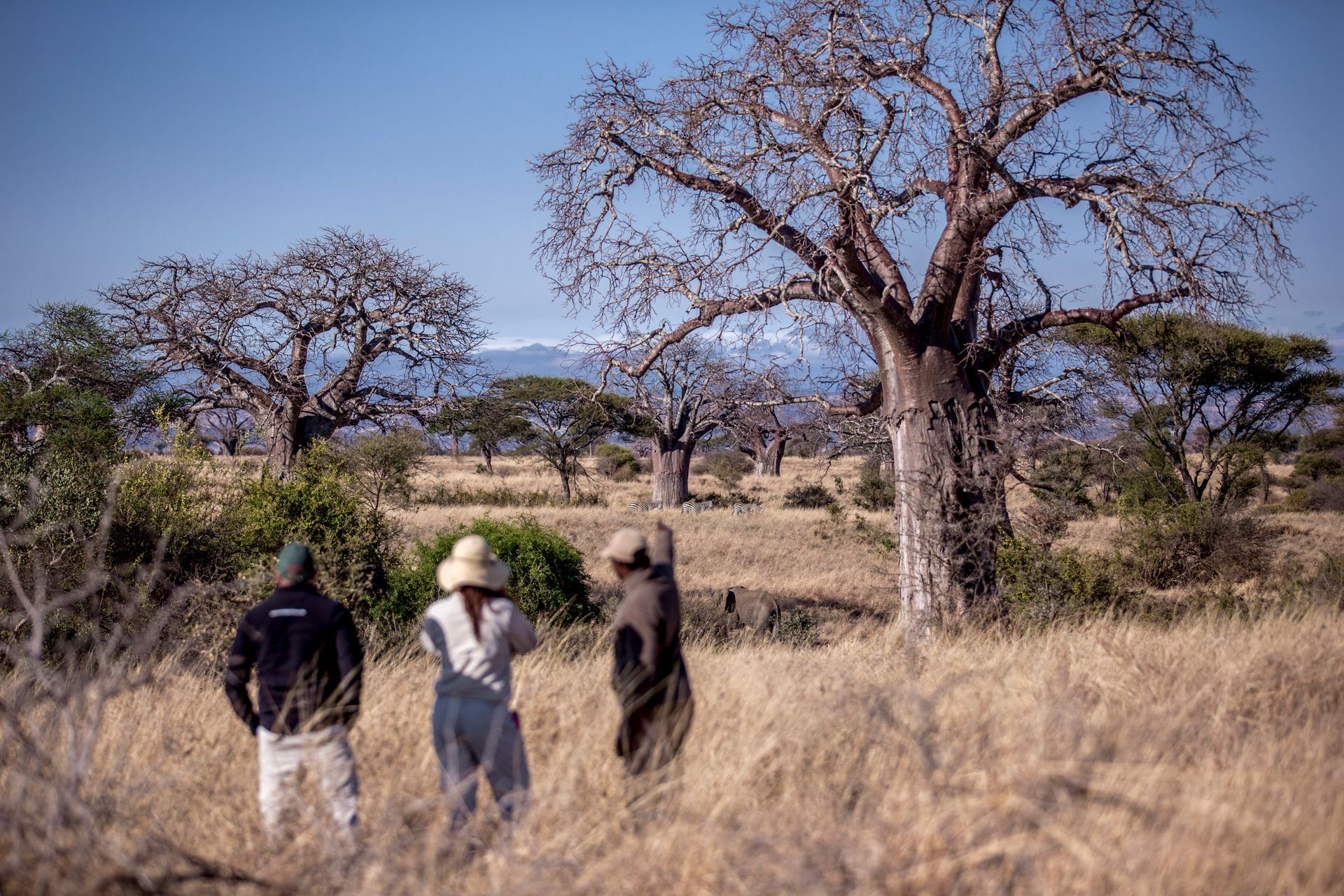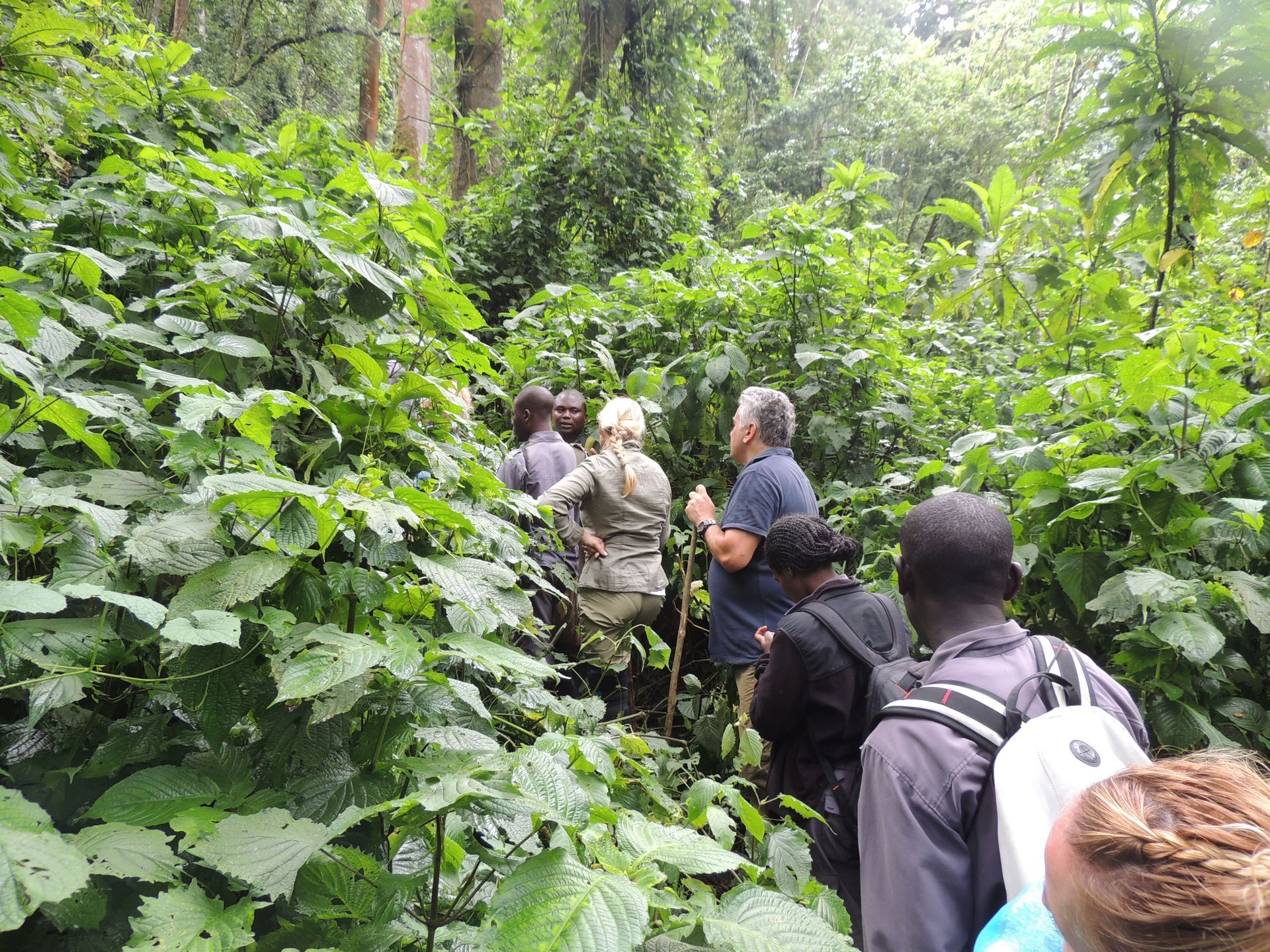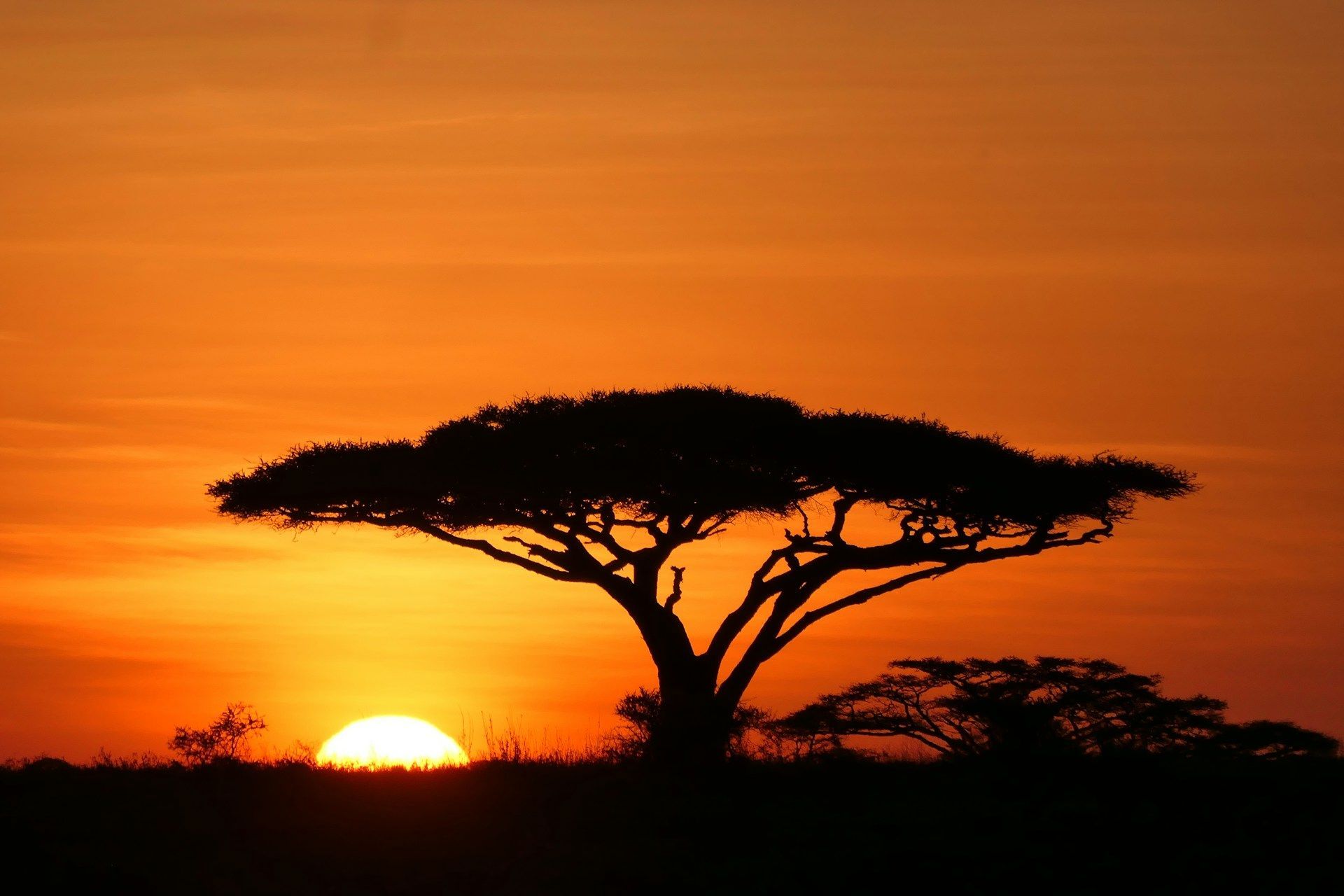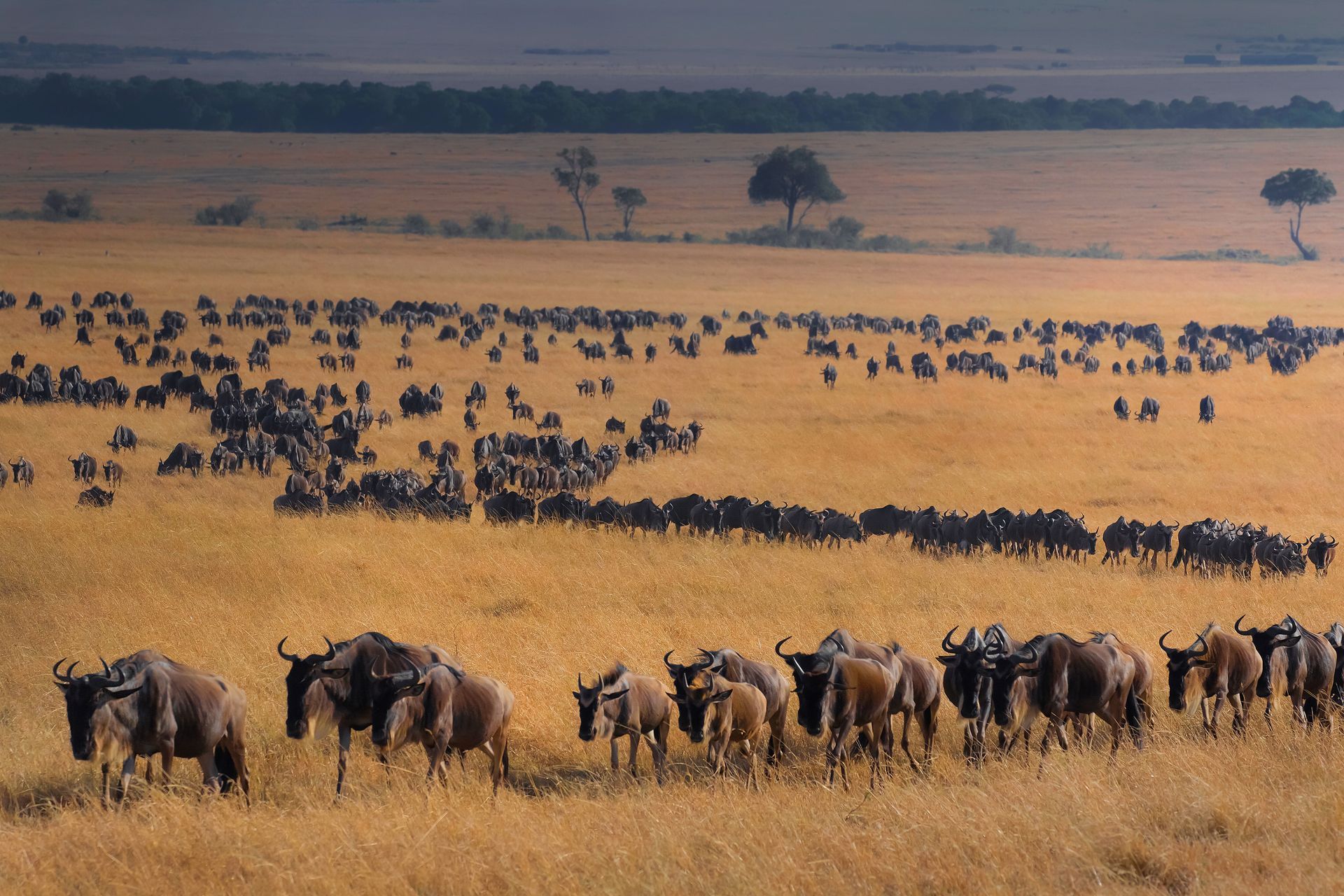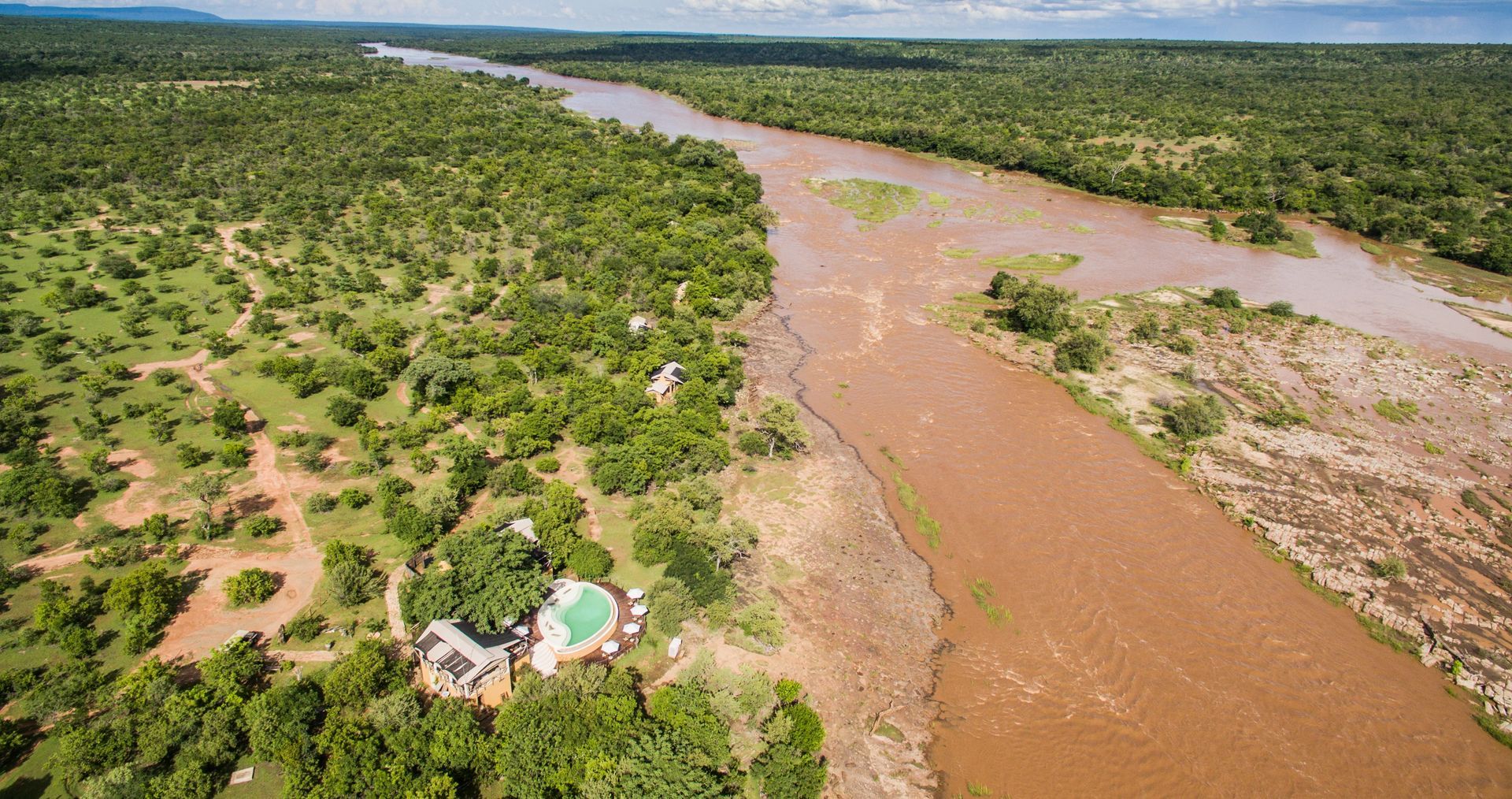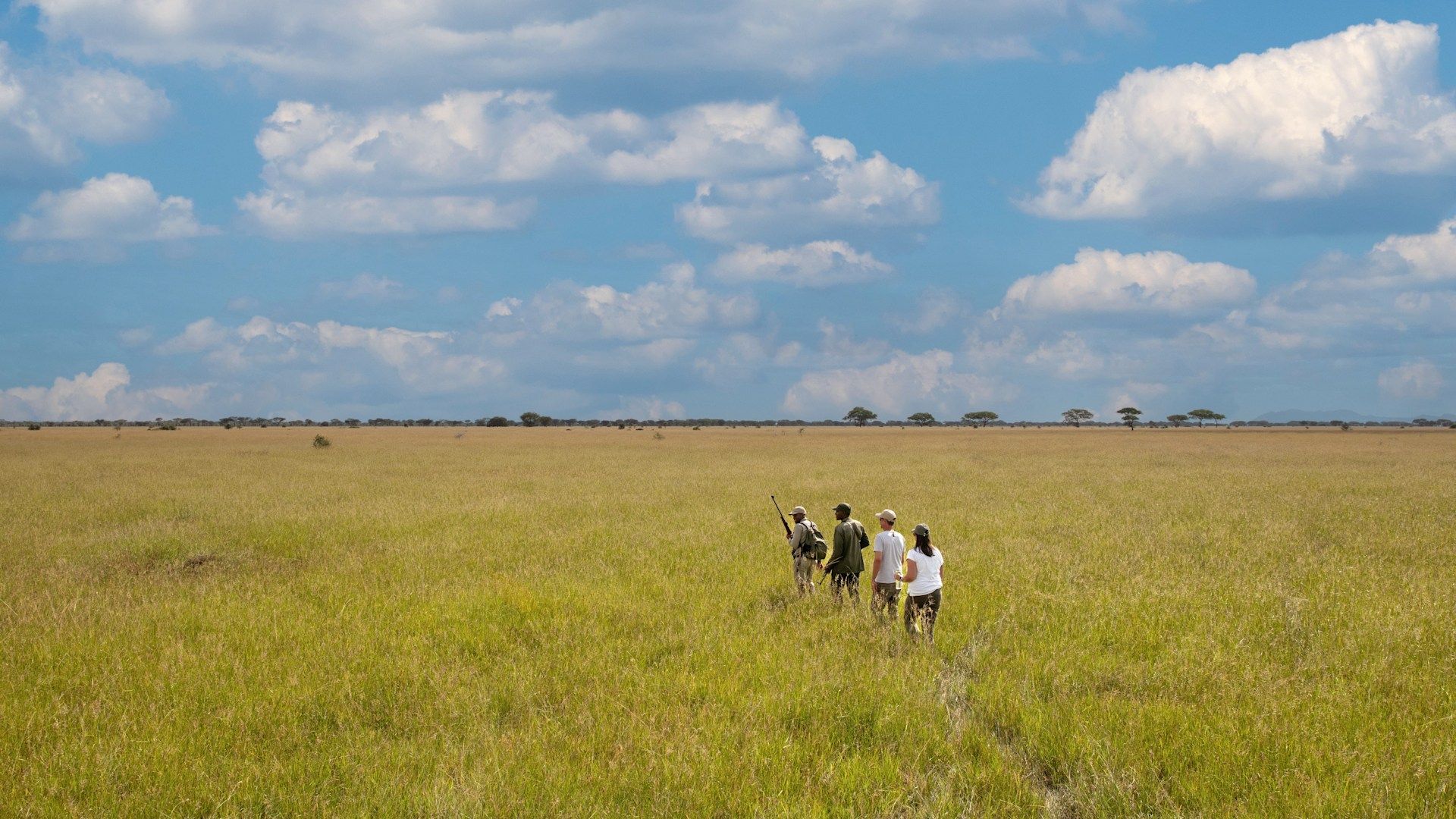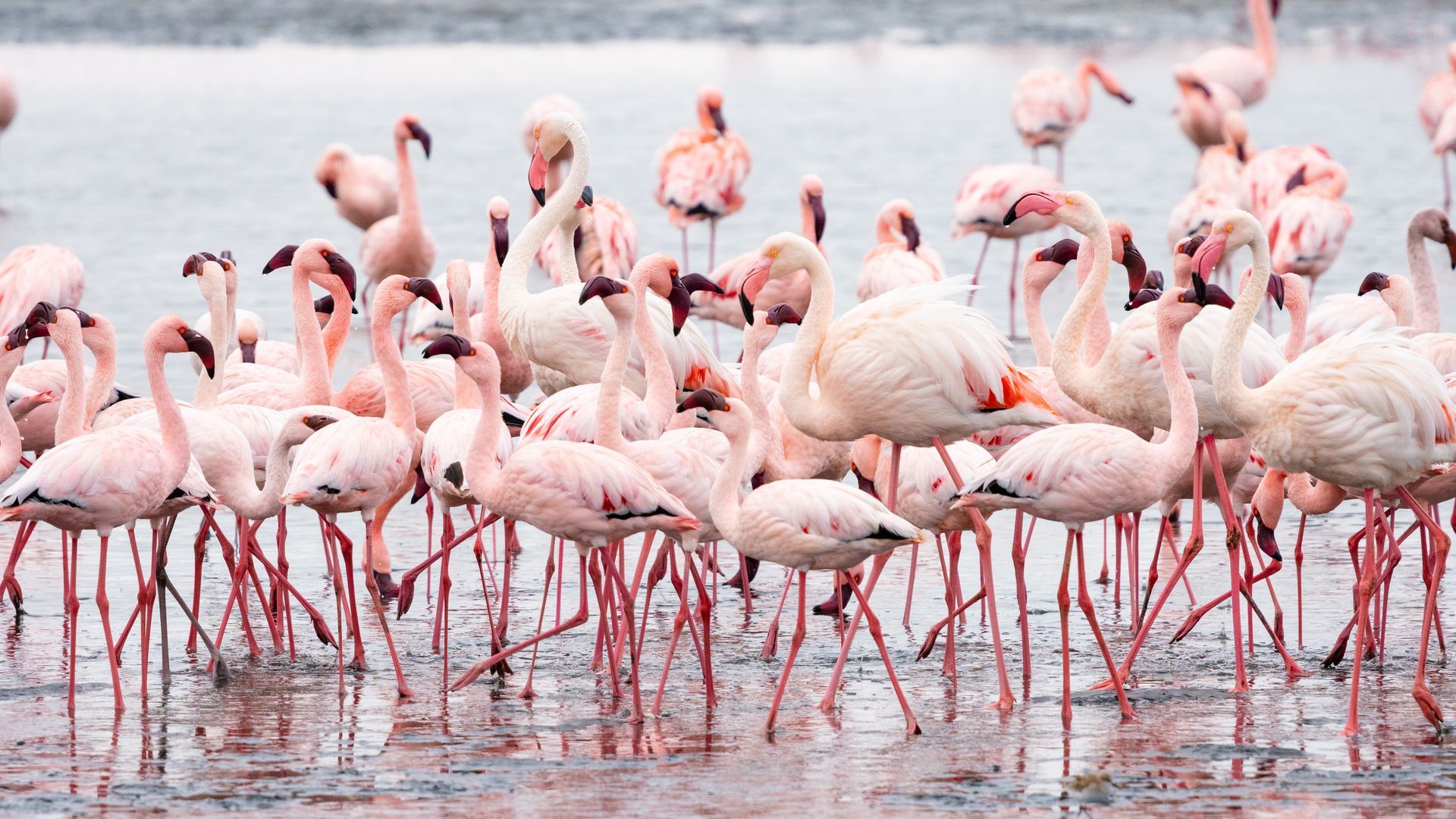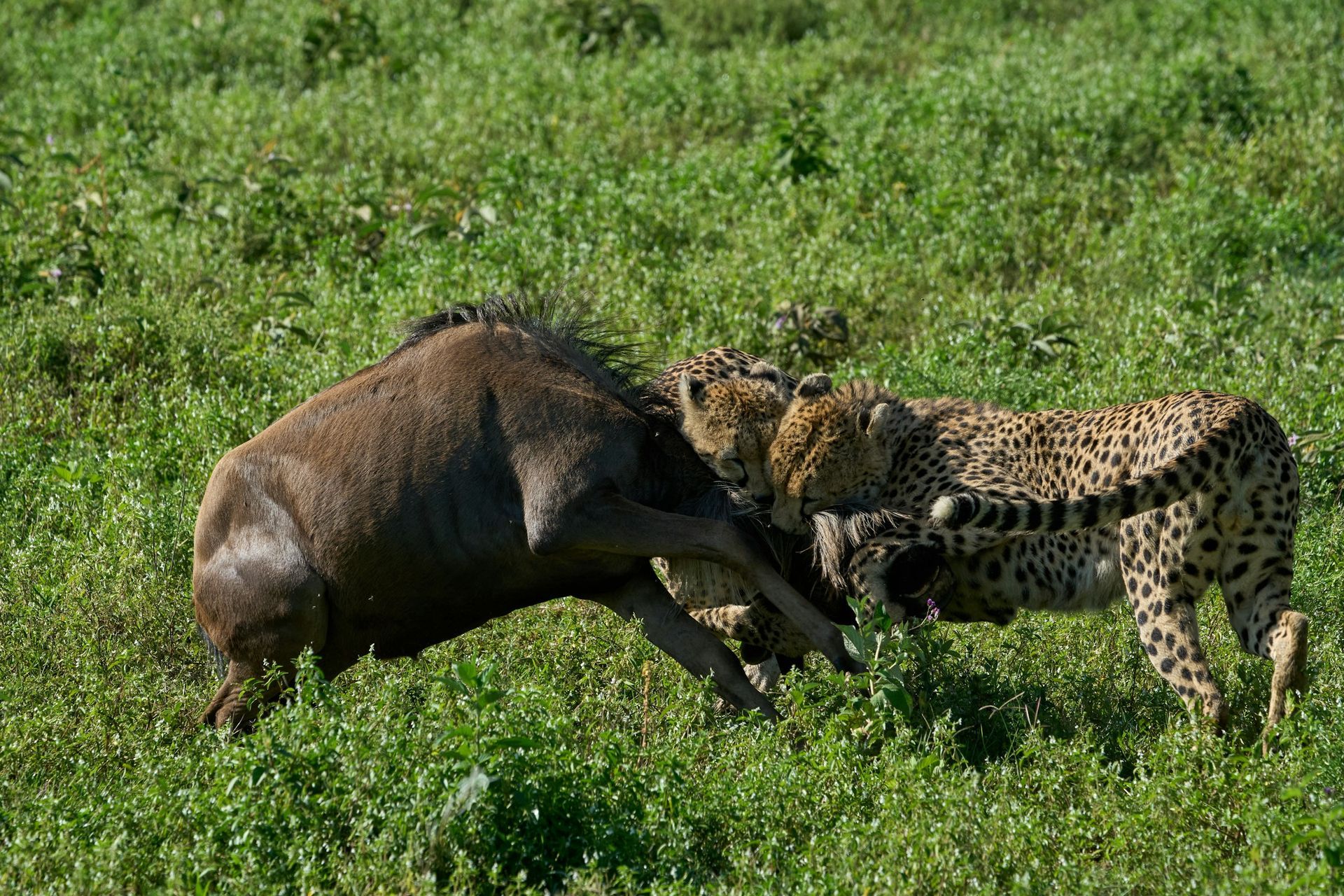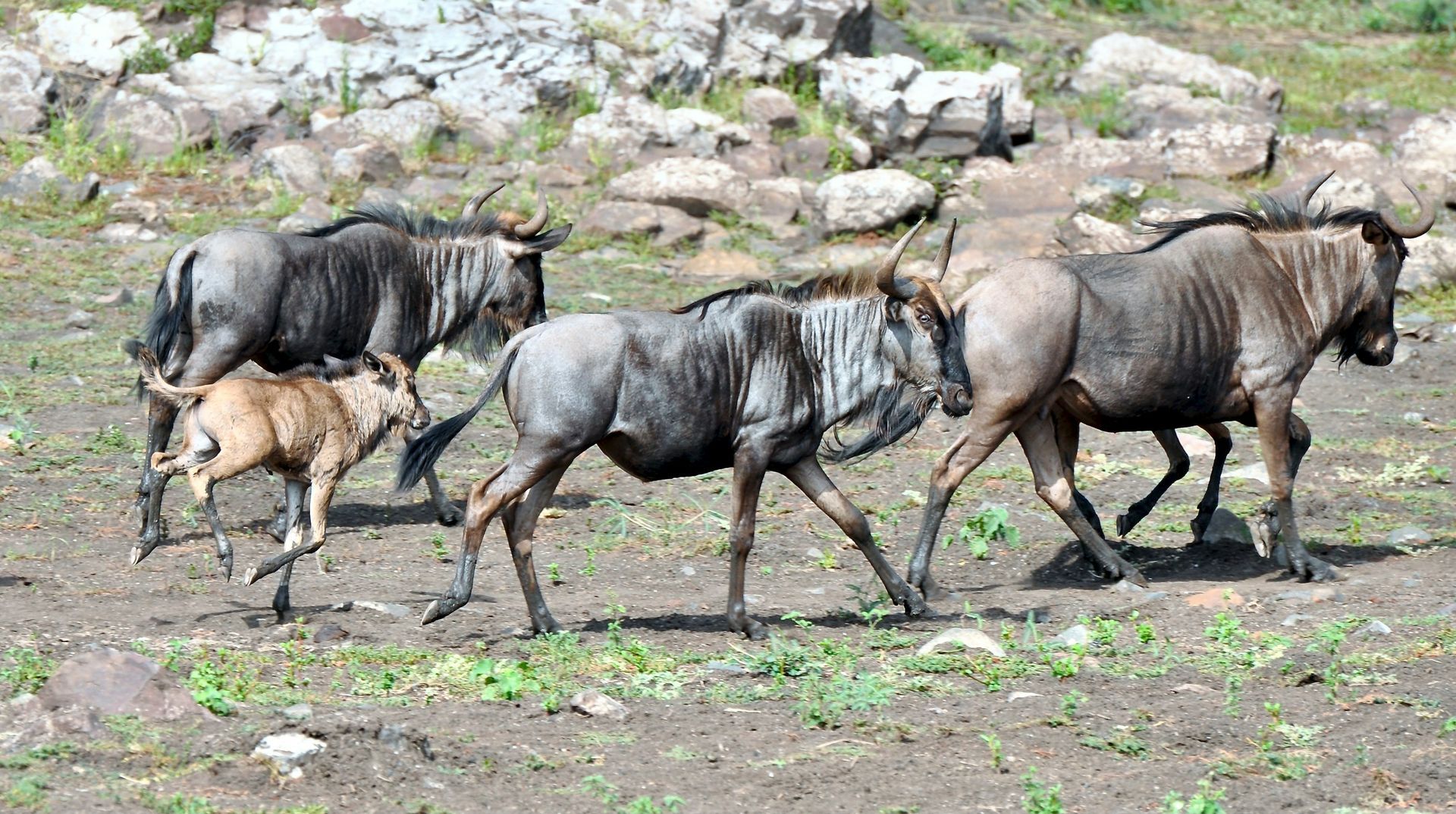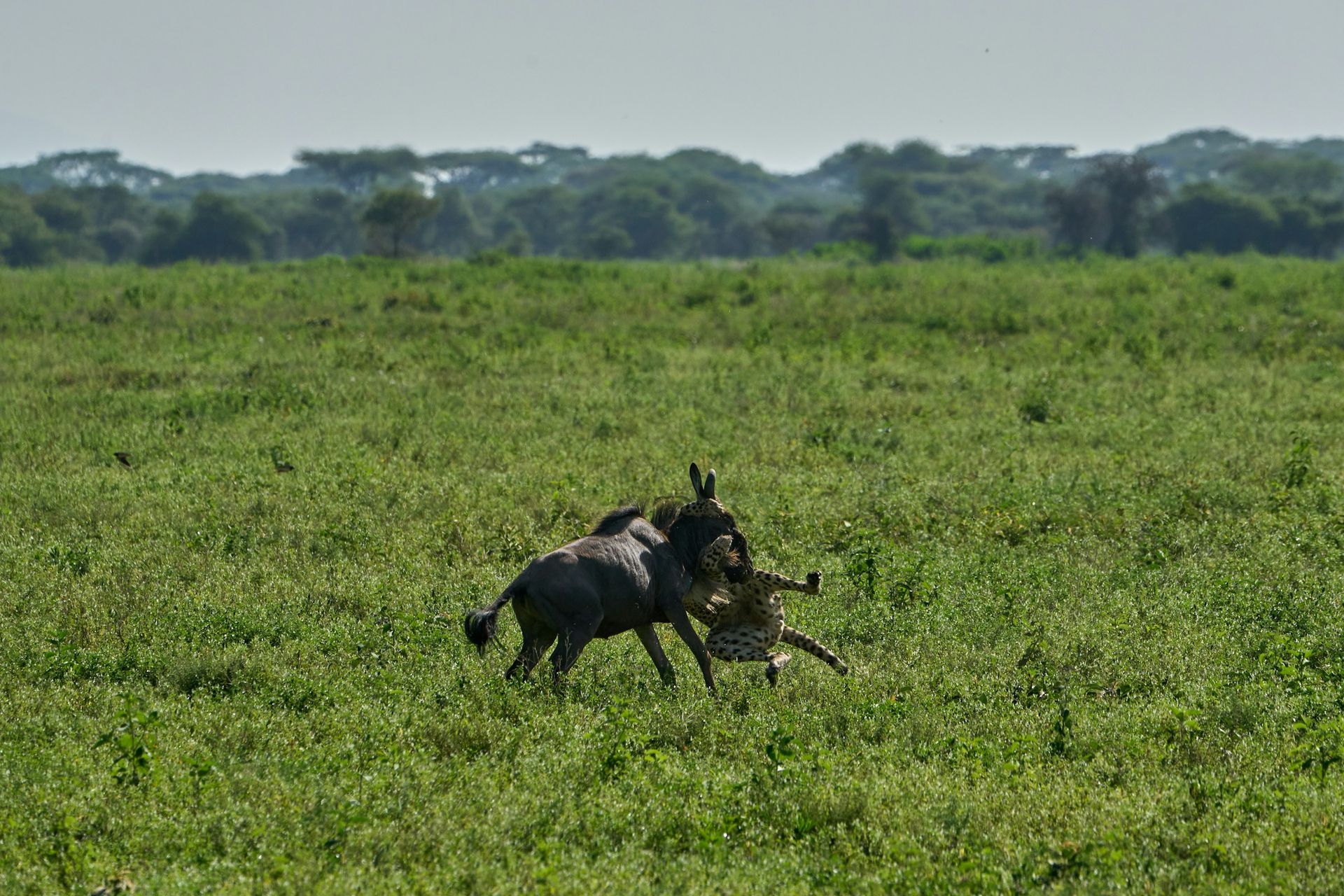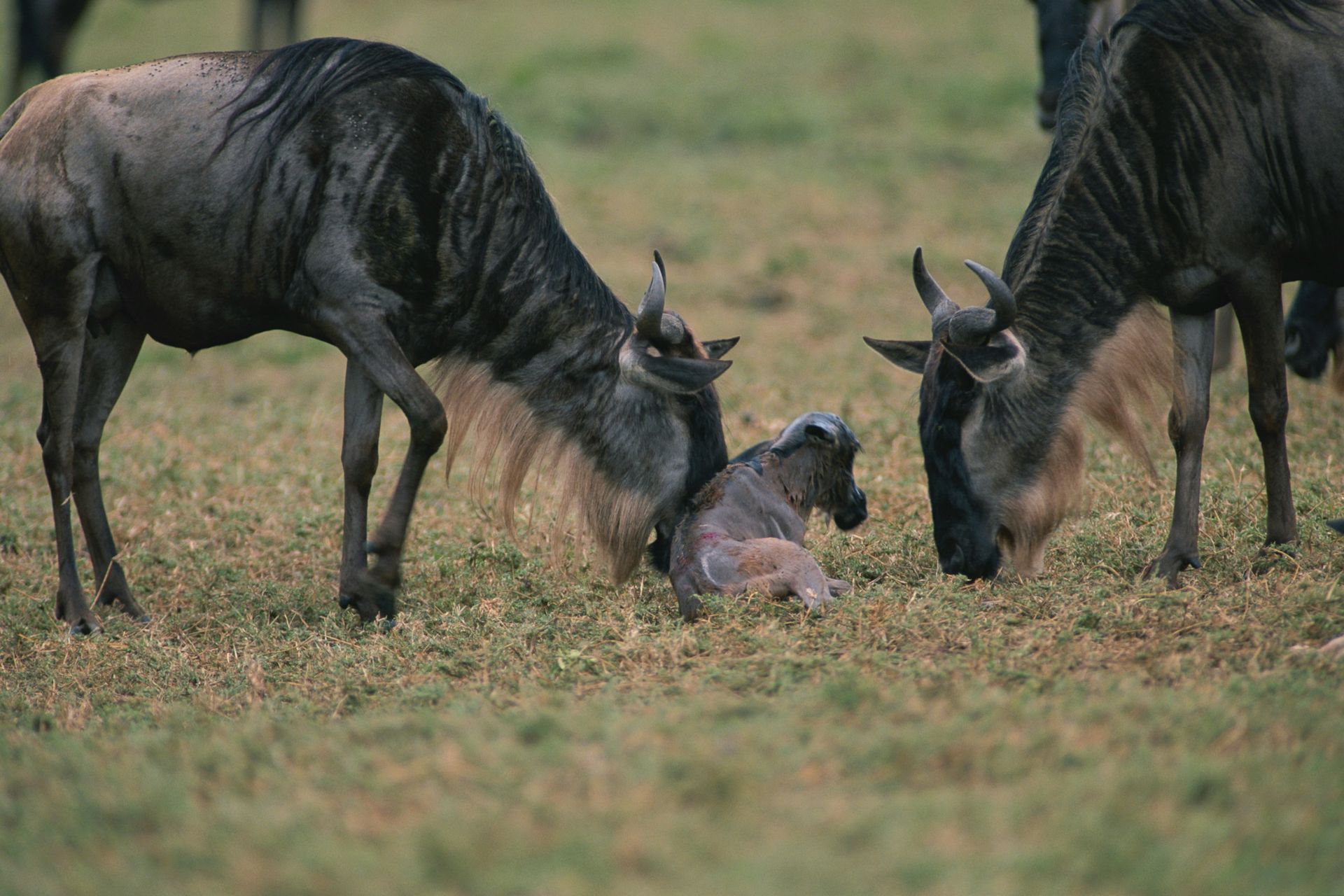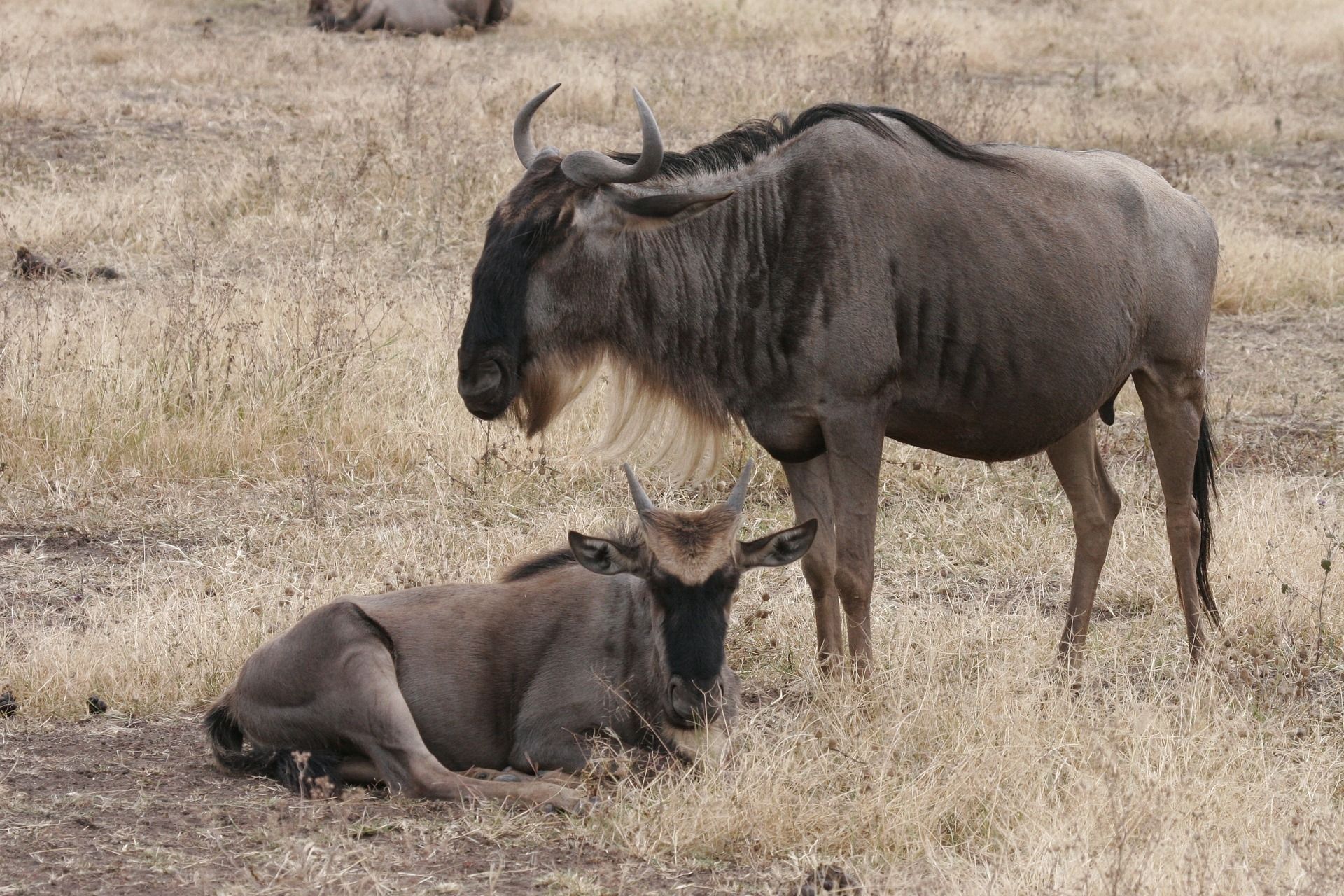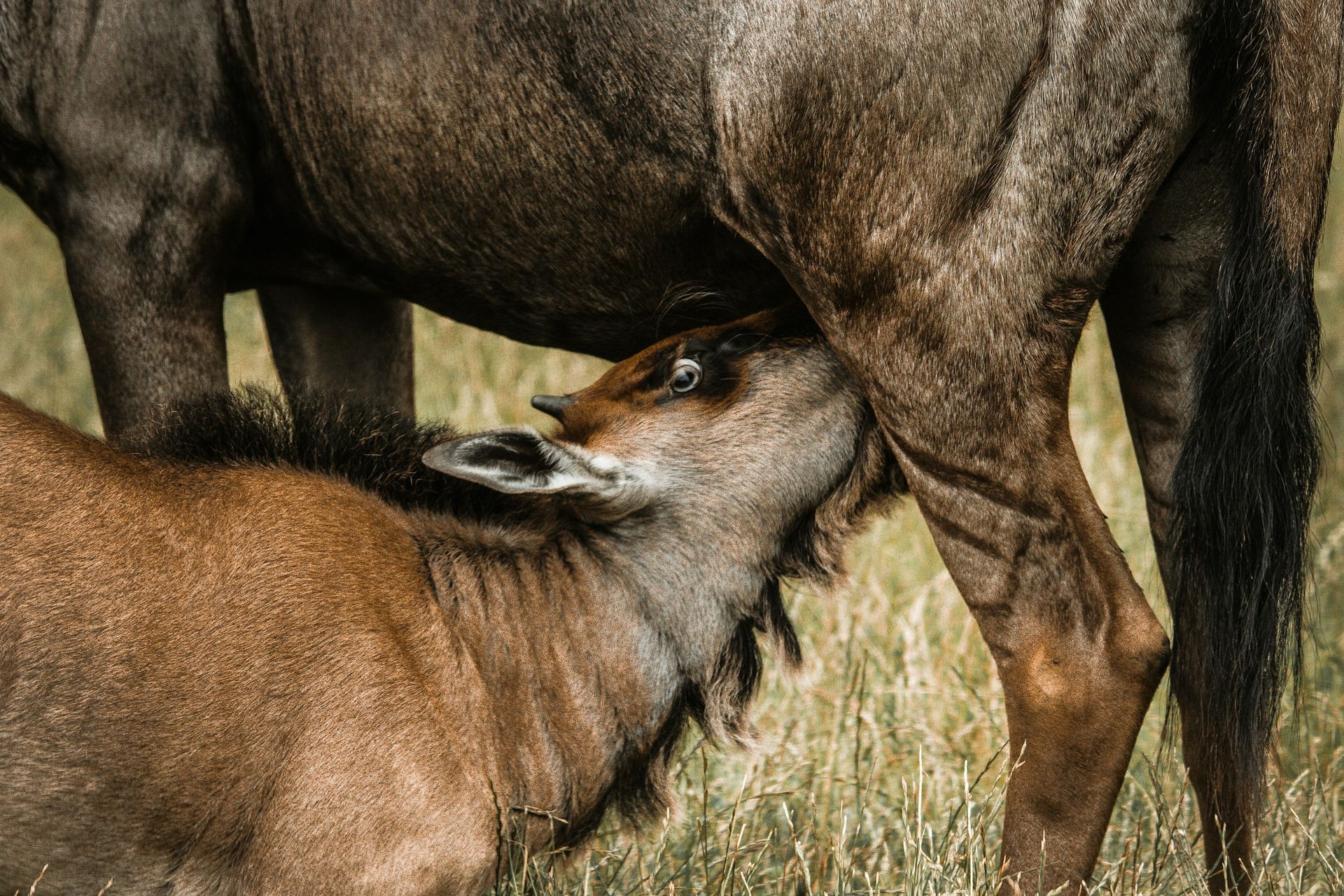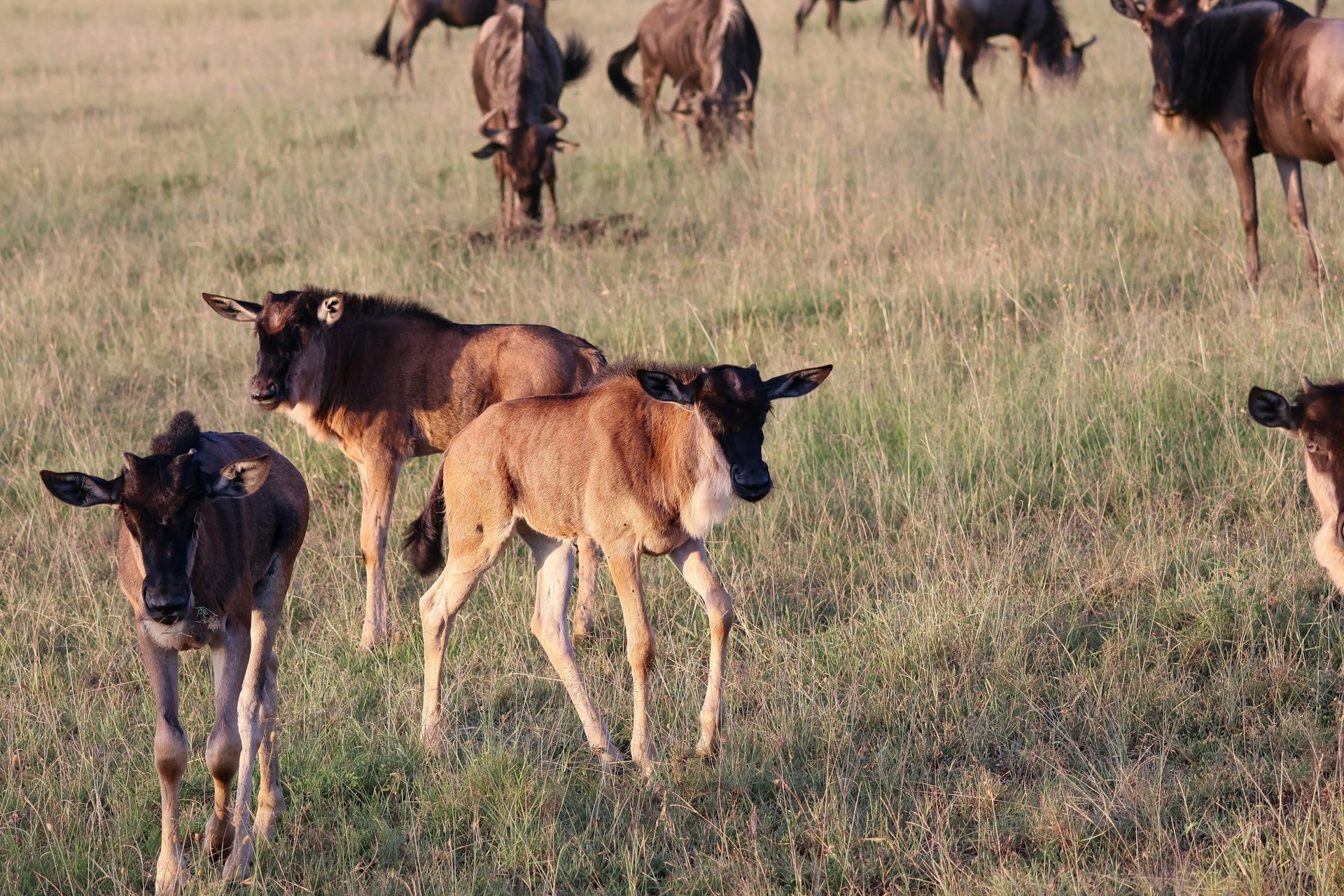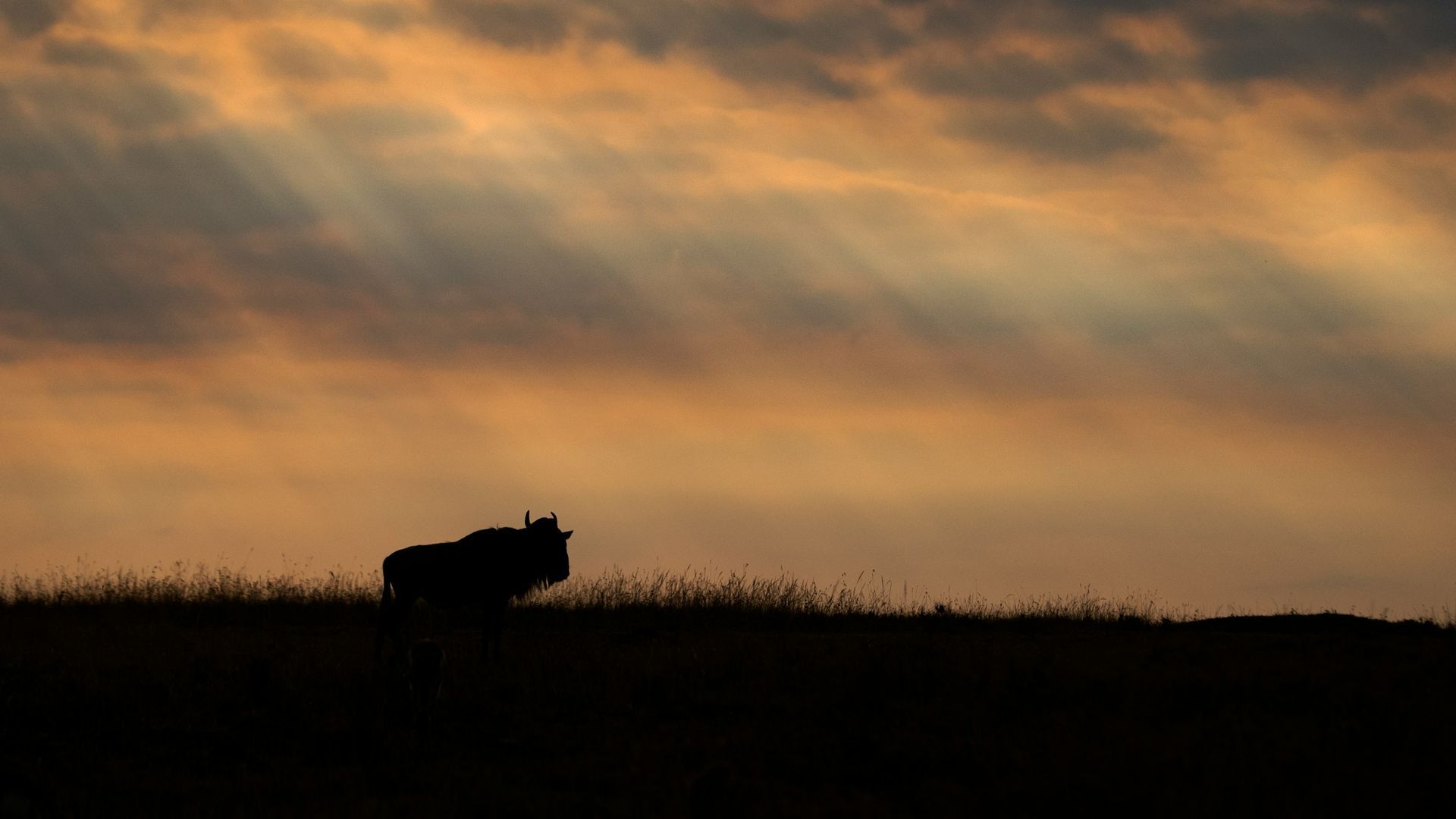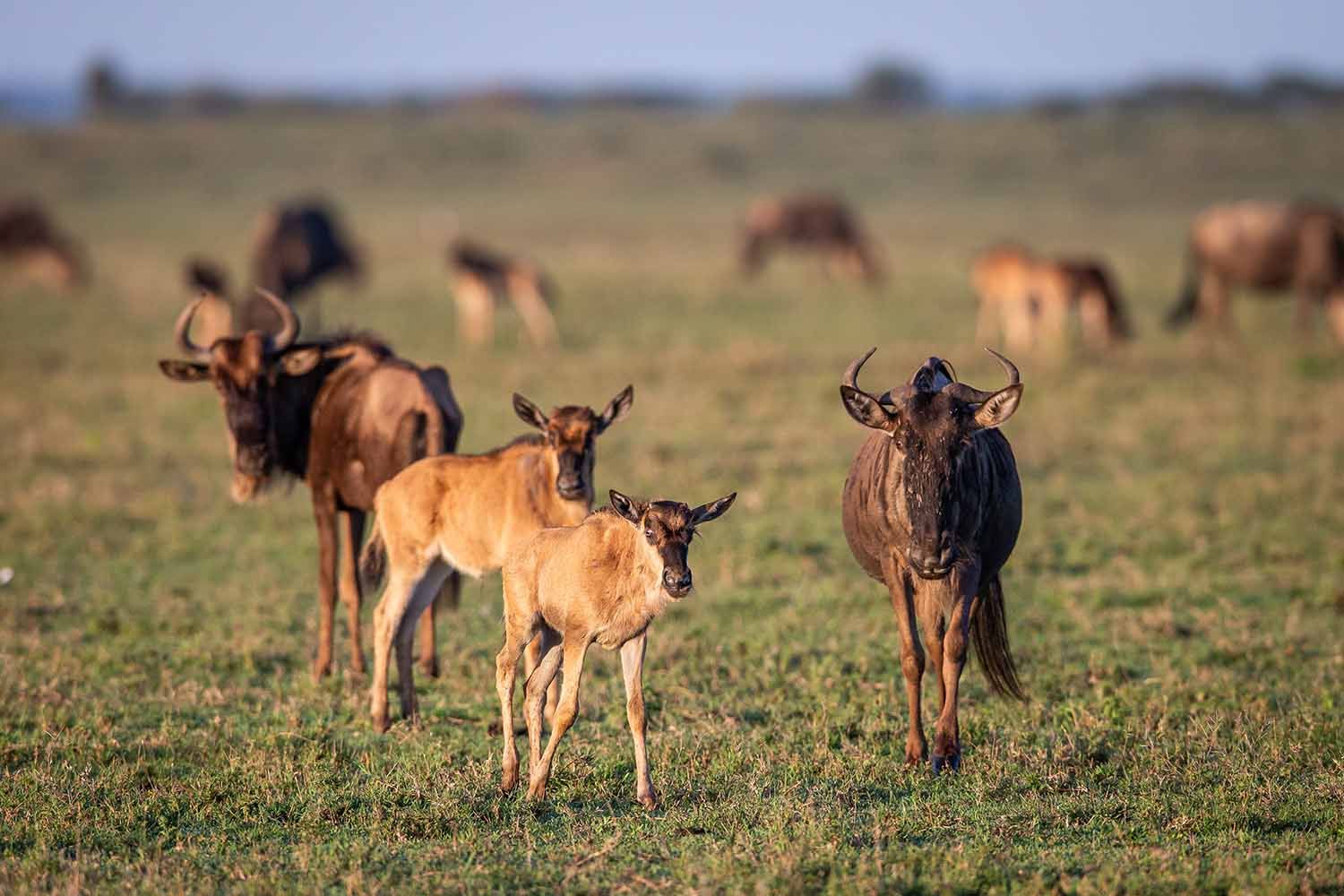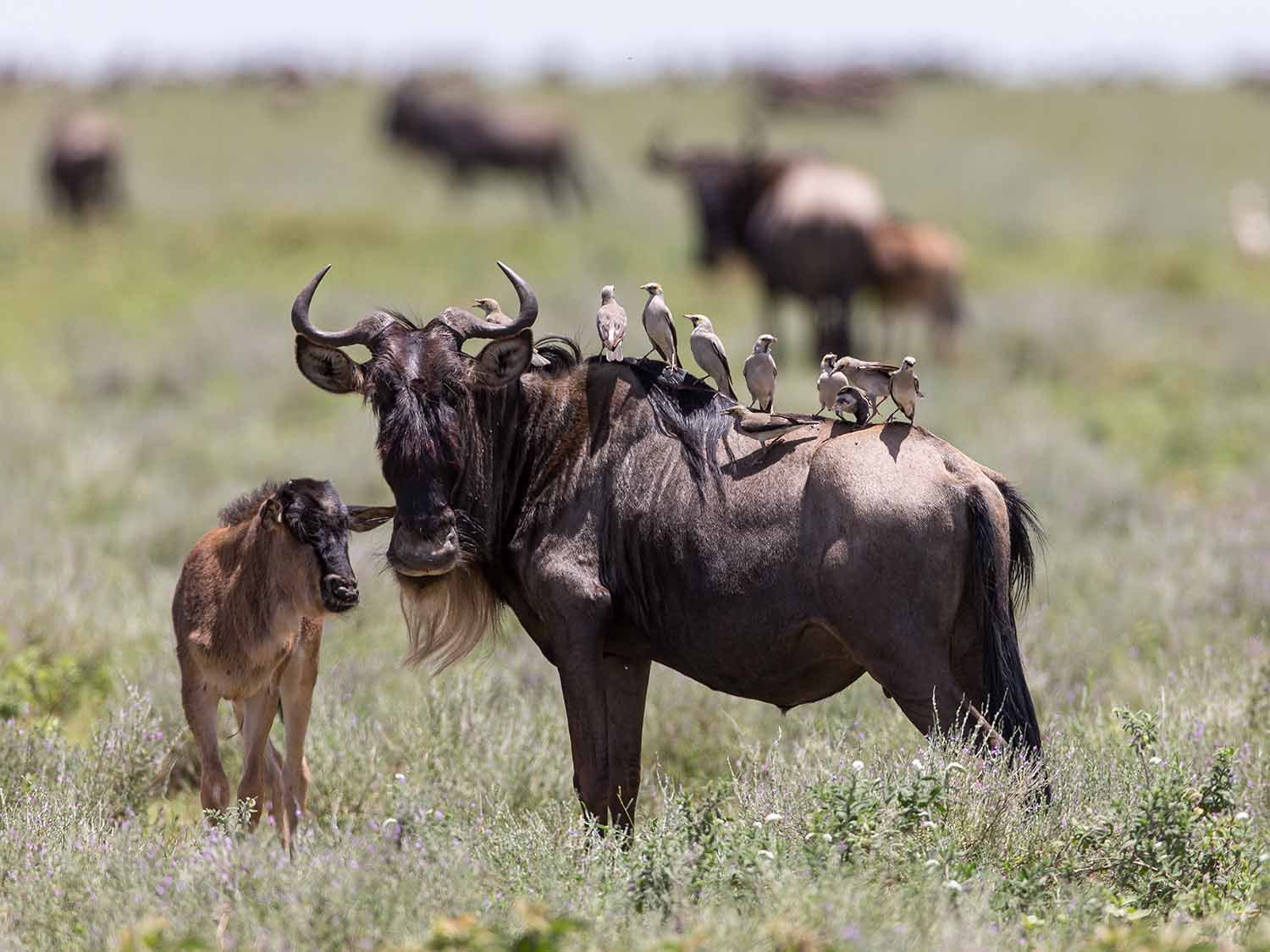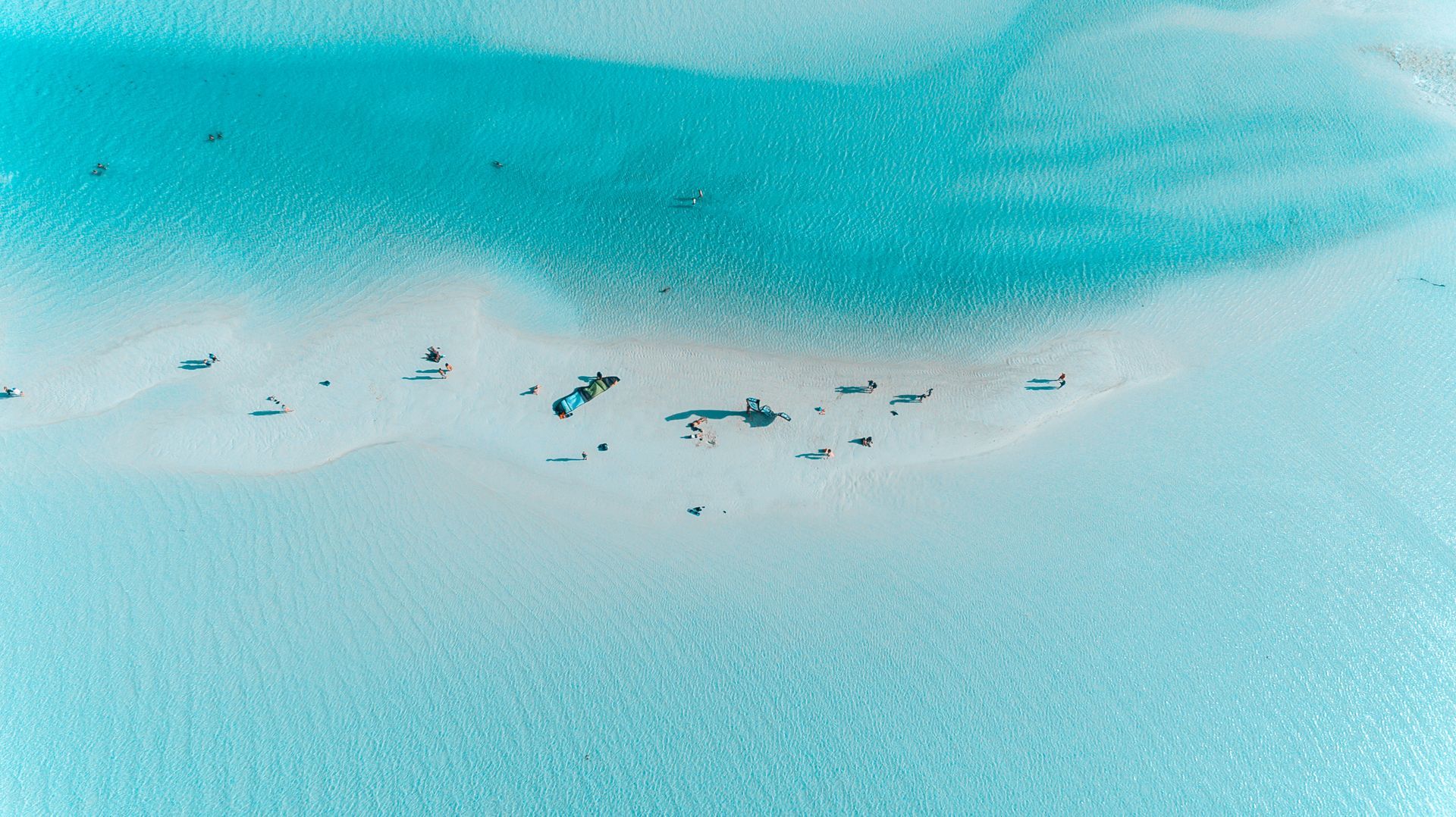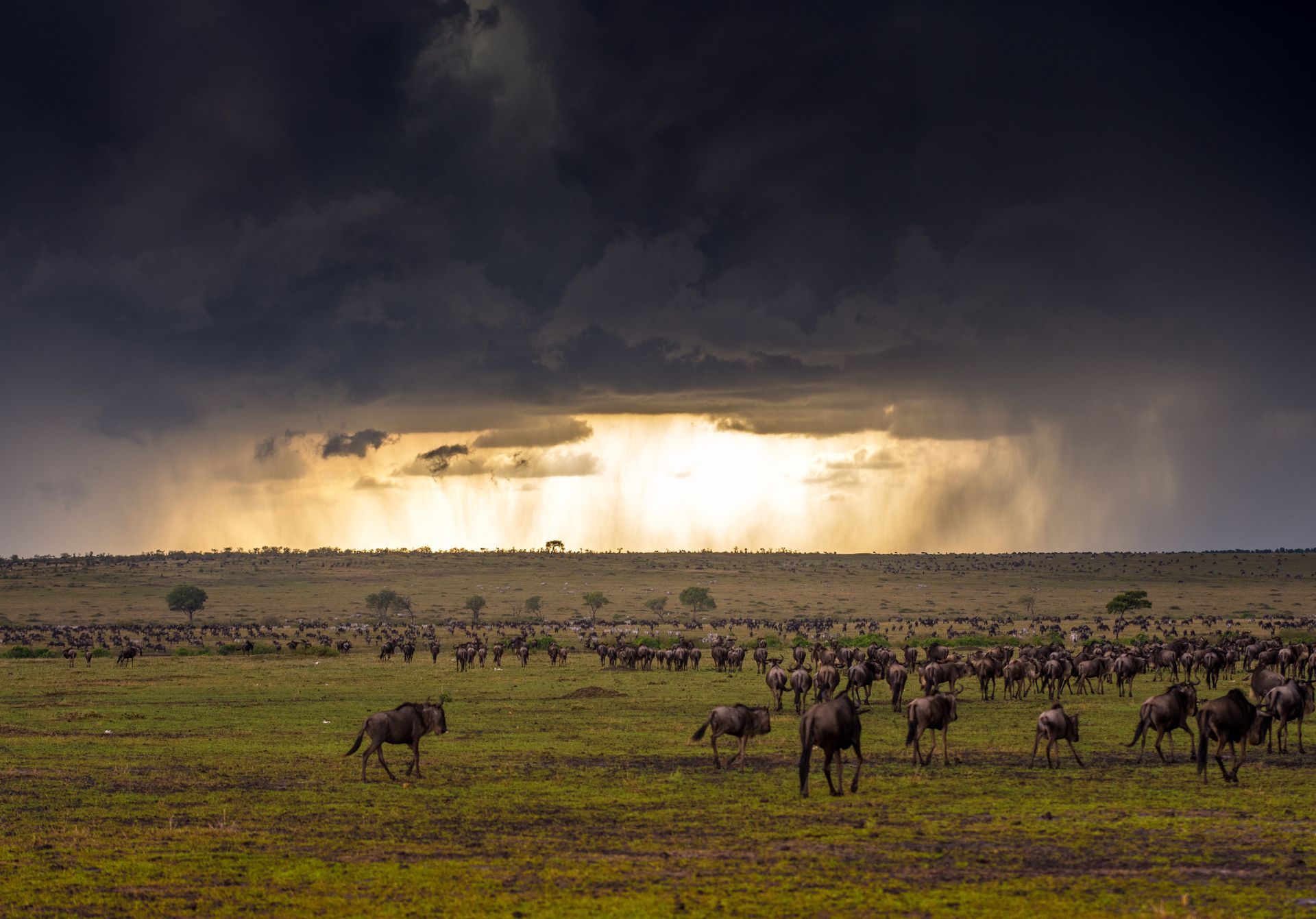Discover the magic of calving season
The southern Serengeti is home to this natural spectacle extraordinaire
When the drama of the river crossings in the north of the Serengeti and the Masai Mara National Reserve in neighbouring Kenya has subsided and the Great Wildebeest Migration heads south, a different facet of this circular spectacle unfolds in the wide grasslands of the southern Serengeti... It's here that the wildebeest stop to feast on fresh grass and give birth in their hundreds of thousands, filling the plains with an abundance of new life. This is calving season - and here's why it should be on your safari itinerary...
Each year, the Great Wildebeest Migration takes its journey south, timed perfectly with the arrival of the rainy season on the southern Serengeti plains. When the rains arrive, what was once a dry, harsh landscape comes to life, bursting into endless stretches of green. It’s a powerful trigger for the wildebeest, who gather in huge numbers to give birth on these lush plains. The Ndutu region, in particular, becomes the heart of this incredible event. This area’s volcanic past has left the soil rich with minerals, helping nutrient-dense grasses to flourish—grasses that provide essential sustenance for wildebeest mothers and their calves alike.
Calving season typically peaks in January and February and is an intense period. Over just a few weeks, nearly half a million calves are born, sometimes as many as 9,000 in a single day. This timing isn’t just a coincidence; it’s a survival tactic perfected over millennia. By having such a large number of calves arrive within a short time, the wildebeest overwhelm the Serengeti’s predators, who simply can’t keep up. Even with many calves falling prey, this mass birthing ensures enough young survive to replenish the herd each year.
Incredible experiences
The sight of a newborn wildebeest taking its first wobbly steps is an experience that leaves a lasting impression. Wildebeest mothers give birth standing up, and within minutes, each calf is struggling to its feet, learning to balance on unsteady legs. Speed is essential, as these calves need to be mobile almost immediately, able to follow their mothers and keep pace with the herd to avoid predators.
Once a calf is born, it forms a quick bond with its mother, recognising her by scent and appearance in the crowd of moving wildebeest. This bond is critical; the calves face a world filled with threats almost immediately, and they need to stay close to their mothers to increase their chances of survival.
The southern plains during calving season are a prime hunting ground for predators who follow the herds, looking to take advantage of this seasonal bounty of vulnerable calves. Despite the synchronised birth strategy, around 30–40% of calves won’t survive their first year, falling to predators, disease, or the hardships of migration.
Predators aplenty
This surge in life also sustains the Serengeti’s complex ecosystem. The southern plains, rich in grasses, attract more than just wildebeest — other herbivores, including zebras and gazelles, join the migration here, arriving in synchrony with the rains. Their presence, in turn, attracts a variety of predators, resulting in a dense congregation of wildlife in one region. The interconnected feeding and breeding behaviours of these animals create a web of life that contributes to the Serengeti’s rich biodiversity.
With their hunting instincts primed, predators around the southern Serengeti have evolved to use the abundance of prey to their advantage. Lions often position themselves near waterholes and key routes, ambushing young calves. Hyenas, which hunt in groups, team up to separate calves from the herd.
Meanwhile, cheetahs, known for their speed, target these young wildebeest who aren’t yet as agile as their adult counterparts. Each predator uses a different approach, but with thousands of calves in the area, they can all find plenty of opportunities without having a severe impact on the overall wildebeest population.
A tourism drawcard
The calving spectacle has become a major tourism drawcard for the southern reaches of the Serengeti. Watching a wildebeest calf struggle to its feet, take its first tentative steps, and bond with its mother has become a bucket-list wildlife experience and it's easy to see why. It's an exciting time offering a safari experience that’s quite different from the more commonly known river crossings of the north and the Masai Mara in neighbouring Kenya. The period from January to March each year draws visitors who want a closer, more intimate view of the lifecycle of one of Africa’s most iconic species.
Guests choosing a calving season safari get the chance to witness the quieter, yet more dramatic side of the migration — the birth of thousands of calves, the bonding of wildebeest families, and the complex predator-prey dynamics that follow.
One of the unique aspects of calving season tourism is the opportunity to see wildlife in a relatively concentrated area. Unlike the river crossings, where the herds are constantly on the move, calving season in the southern Serengeti and the Ndutu Plains is more stationary. Guests often stay in one region and observe as the herds gather on the green plains.
A rollercoaster of emotions
One of the main draws of calving season tourism is the chance to see nature’s resilience and the beauty of new beginnings. The season is often described as an event full of contrasts, where joy and survival struggles coexist. Guests can expect a rollercoaster of emotions — one moment marvelling at a calf’s first steps, and the next witnessing the high-stakes drama of a predator encounter.
While the sight of a newborn calf is heartwarming, it’s also sobering to see the natural threats these young wildebeest face from the moment they are born. Lions, hyenas, and cheetahs often prowl nearby, drawn by the abundance of vulnerable young.
For wildlife enthusiasts and photographers, this season offers close-up opportunities to capture predators as they stalk and hunt among the herds, using various techniques and adaptations to hunt in the crowded environment. It provides a rollercoaster of emotions for those who witness the cycle of life, and death, in such close proximity.
Immersive safari experiences
Calving season safaris are usually based in mobile or semi-permanent camps located close to the herds, providing a front-row seat to the action. The experience can be wonderfully immersive — waking up to the sounds of wildebeest grunting and seeing large herds grazing right outside the camp creates a feeling of being deeply connected to the landscape and its wildlife. These camps are often smaller and offer a more intimate safari experience, with fewer tourists compared to peak migration season, making for a quieter, less crowded environment to enjoy wildlife sightings.
Talk to us about arranging a calving season safari for your clients that allows them to witness this incredible spectacle.
